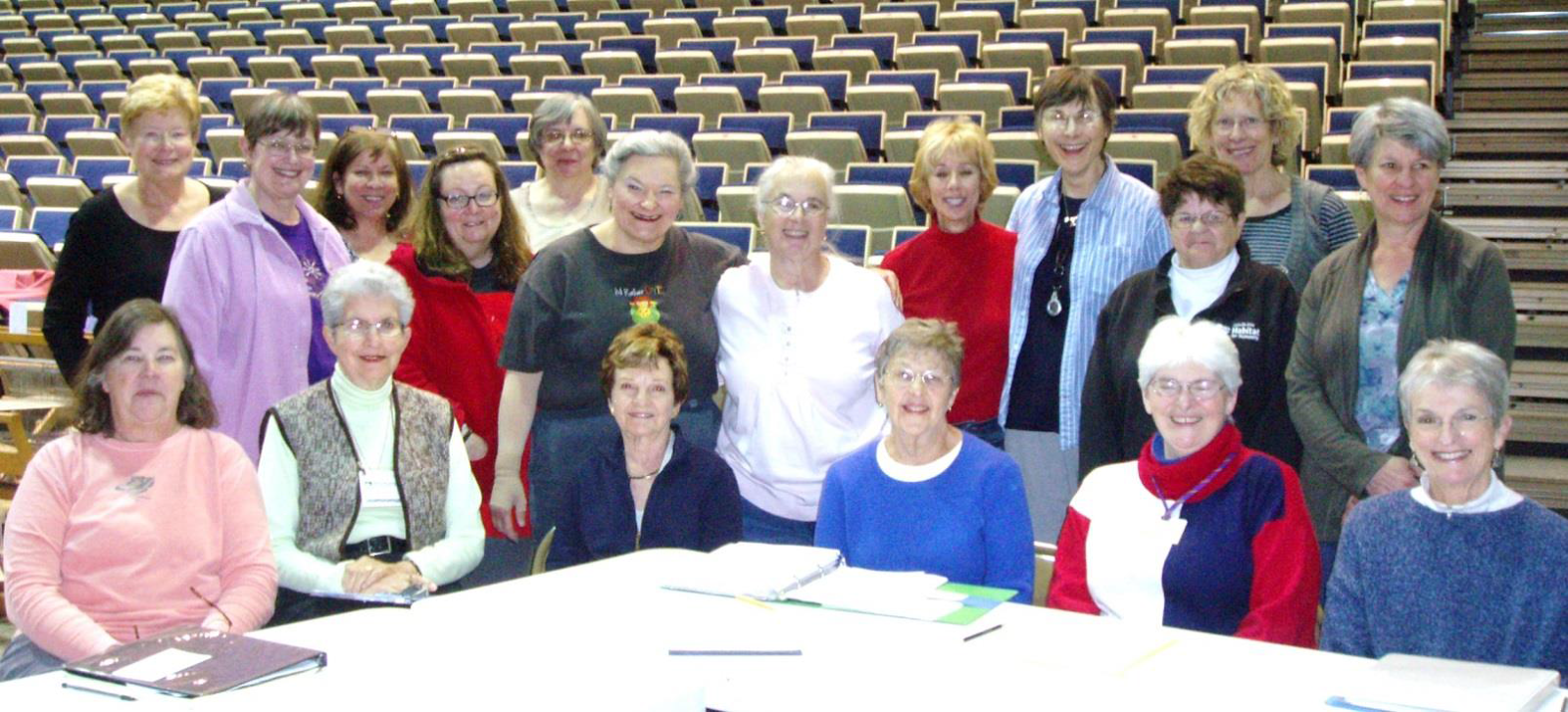I absolutely love spending time at John C. Campbell Folk School. Last month, Gary and I spent a week there immersing ourselves in all things handmade. I took a weaving class with Joann Hall and Gary took a class in woodturning, making bark edged bowls. The theme of the week was Scandinavian Heritage Week, so Swedish weaving was the topic for my week. The class marketing materials described a class with a variety of projects, using fine threads and warping techniques. However, the class project was learning a technique called Swedish Art Weaving, which is similar to tapestry weaving. The class would be weaving a sampler during the week that looked something like the photo below. The sampler uses a linen weft and 3 strands of wool for the pattern weft. It is woven from the back, so you need a mirror to see the pattern as it emerges.

Most weaving workshops have at least one student who is "difficult". Sometimes, it is an intermediate class and someone shows up who has never woven before. Other times, it is a student that monopolizes the instructor's time, leaving the rest of the class floundering. I was the difficult student during the week, not because I made demands on the instructor, but just because I was off doing my own thing throughout the week. I warped the loom for the class project and then decided, I really didn't want to spend the week, weaving something that I didn't like and using a technique that I likely wouldn't use again. So instead, I toddled off to another loom, picked a pattern and wove some towels. No new techniques learned, but it was enjoyable to spend the week, planning a project, selecting yarns, throwing the shuttle and not thinking about anything beyond the walls of the Folk School.

I started the project on one of the Folk School's Macomber looms, which is a loom that I have thought might be in my future. It is a substantial loom and can be used for rugs as well as very fine threads. Large used Macombers, with a 48-60" weaving width and up to 16 shafts, can be found for reasonable prices around the country. The one complaint is the hooks attaching the treadles to the lams on the Macombers. They were cumbersome to change, but I did not have a problem with the hooks jumping off the treadles, of course I only wove about an inch, so not a good test. But the warping was comfortable for this 100 end warp.

The class had a great group of weavers, from Michigan, New York, Tennessee, Kentucky, DC and of course North Carolina. Bill, seen below, even brought his monstrous Glimakra with him. There were several other Glimakra's in the studio and they are amazing looms. All put together with pegs, so they can be assembled relatively easily. Joann, our instructor, is the dealer for Glimakra in the US and she was very helpful to the students in the class with Glimakra looms. I tried out the looms, since I had never woven on a countermarche loom or used a loom with texsolve heddles.
So instead of making a sample, I put on a 5 yard warp to make dish towels. One of the joys of the Folk School is the yarn room. The selection of colors and sizes of yarn is amazing. I selected 6 shades of blue and green for the towels. I used a summer and winter threading and a crackle treadling for the first two towels. I liked them a lot, but it was a two shuttle pattern, so it progressed pretty slowly. By Thursday, I knew I needed to speed things up, so I wove the two remaining towels with one shuttle in twill treadling with different size color blocks.


Date Finished March 2014
Loom Mighty Wolf
Weave Structure Summer and winter, treadled as crackle
Reed 12 dent, 24 epi
Warp Fiber Cotton
Count 8/2
Color 6 shades of blue and green
Source John C. Campbell Folk School
Warp Width in Reed 20 inches
Ends 480
Length 5 yds
Weft Fiber same






























